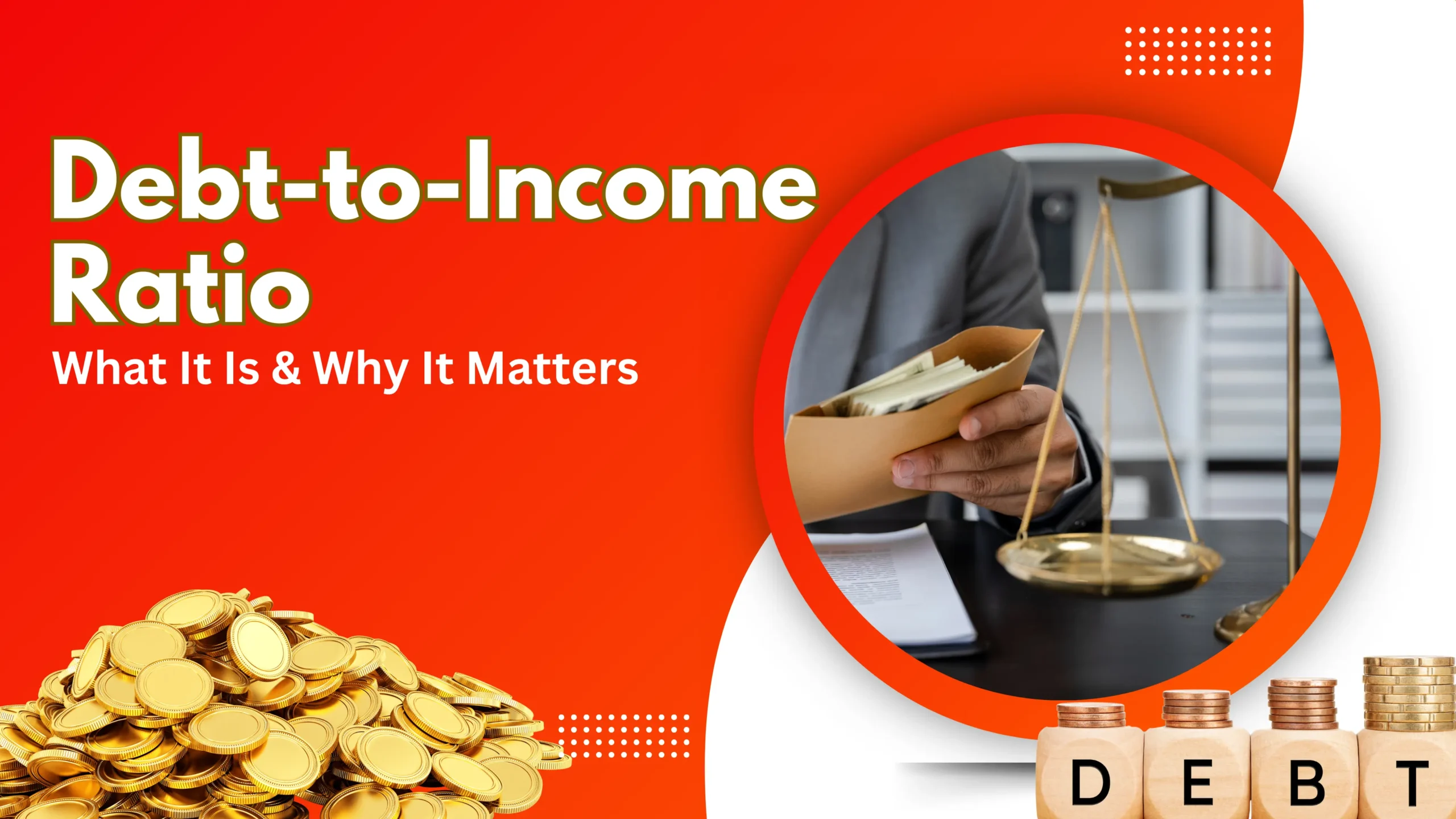Key Points:
- Debt-to-income (DTI) ratio is your income relative to the debt you have.
- DTI shows how financially stable you are.
- Lower debt-to-income ratios signal to the lender that you’re creditworthy.
- With a good DTI ratio, you’ll get approved for a loan easily.
Debt-to-income (DTI) ratio compares your monthly debt payments to your gross monthly income. You can simply divide the total debt payments you’re making each month by your income (before any tax or other deductions).
Lenders use this ratio to get an idea of whether you’ll be able to manage the payments if they approve the loan. Generally, payday loans or personal loans with no credit checks rely on this factor to assess your creditworthiness. The lower your DTI is, the better.
It means you have sufficient income as compared to the debt you’re taking on. It makes you a less risky borrower in the eyes of lenders. For example, your monthly debt payments are totalling to $2,000 and your gross monthly income is $8,000. Your DTI would be 25 percent in this case.
How to calculate debt to income ratio?
Calculating your DTI is simple. First of all, add all your monthly debt payments. Then, divide it by your gross monthly income. Now, multiply this ratio with 100. That’s it. Using our previous example, the combined monthly payments you’re making towards debt is $2,000 and your gross income per month is $6,000, then your debt-to-income ratio will be 33 percent.
DTI = (total monthly debt ÷ gross monthly income) × 100
What is a good DTI ratio?
Usually, a debt-to-income ratio below 35 percent is considered good. Most lenders will need a DTI below 36 percent for approving your loans. That being said, there are some lenders who allow up to 43 percent and sometimes even 49 percent may be manageable.
But, above that limit, the chances of getting approved for a loan are less. Also, the higher you are on this spectrum, the worse your financial health is. Also, debt is often directly tied to credit utilization. While not connected, having a high DTI could mean a lower credit score.
Why is DTI important?
The debt to income ratio (DTI) is important because it shows your creditworthiness. Whenever you’re taking loans that don’t require a credit check, this becomes an important factor to understand your financial health.
So, your eligibility for mortgages, personal loans and for refinancing student loans depends on this ratio. When this ratio is lower, it indicates to the lenders that you have more income relative to your debt. So, usually a DTI of 28-35 percent is great.
Overall, debt to income is just a clear picture of where your finances are at. It is not just for the lenders, but also for you to manage your budget or make important financial choices. You can get an idea about where you need to cut on debt, or if you need to increase your income.
What if I have a high debt to income ratio?
Having a high debt-to-income (DTI) ratio means difficulty in meeting the monthly payments on your loans. This can cause disturbances in your budget, and there may be delays in debt repayment, accruing additional fees and penalties.
Also, delays in payments will reflect on your credit history for up to 6 years. So, not only does this add financial stress, it also affects your concentration at work, relationships, health, and sleep. You may even lose on securing new credit opportunities.
How can I improve my DTI?
If your DTI is too high, you may want to take the necessary steps to reduce it. The ideal case would be increasing your income—so you can try asking for a raise at work, or start a side hustle to earn more. The extra income can go towards paying off debt.
Another great way is to focus on paying back high-interest debts first (avalanche method). That way, you’ll be able to avoid paying more in interest over time. This is especially helpful when done with credit card balances or other loans with extremely high interest rates.
Next, you can consolidate your debt. Combine all your existing debts into one loan. It will help you pay off the debts faster, thus avoiding interest. And, you’ll be able to simplify your payments—because then you just have a single loan to take care of.
Moreover, you can get the new loan at a lower interest rate than what you were previously paying for your debts in total each month. However, make sure that you’re avoiding any new debt during this time. And, try to stop unnecessary spending too.
Additionally, you can also consider transferring all your high-interest debt into a new card. Balance transfer credit cards often come with a 0% APR introductory period, which lasts for about 12-18 months. You’ll be able to pay off your principal faster, since there’s no interest.
Front-end vs. back-end debt ratio
Front-end DTI ratio is just a measure of your mortgage payments in relation to your monthly income. Whereas, back-end DTI includes all other monthly payments including mortgage, credit cards, auto loans, and other obligations.
For example, if you’re earning $5,000 monthly, and you have a mortgage payment of about $1,200, your front-end debt-to-income ratio will be 24 percent. At the same time, your back-end ratio includes literally everything—credit card payments, car loans, student loans.
So, mortgage lenders prefer a front-end DTI ratio of 28 percent or less. Although, sometimes they do accept higher ratios if your credit score, savings, down payment, and other things point out that you’ll be able to handle the loan.
The back-end ratio is best when it is below 36 percent, as we talked about above. However, some lenders do accept ratios up to 49 percent too if you have good credit!
Can I have a DTI that is too low?
Having a debt-to-income (DTI) ratio that is too low shouldn’t be a concern. It just says that your income is far better off than the debt you have. This shows financial stability. Also, the risk of defaulting on loans is close to 0. However, a very low DTI can also mean that you’re playing it too safe, not taking advantage of available credit. It can be seen as a missed opportunity for financial growth or investment for some.
Best Rate Check: Find lower interest rates, for free!
Tired of applying with lenders and still can’t get approved? What if we told you that you don’t need to bounce from lender to lender, and you can let them come to you instead? That too, only the good ones who are charging lower interest rates? There are no credit checks, no collateral requirements, no cosigner obligations, and no lengthy documentation. We connect you to, hands down, the best, most trusted lenders in the market. With just a single, short online application form, you’ll be matched with multiple lenders for personal, payday, title, installment, and cash advance loans. All of that, for free—no charges at our end. Go apply!
Frequently Asked Questions
For those who don’t earn through traditional means, lenders rely on additional documentation—like tax returns or bank statements—to check your income stability. They will look at your average income over years, or use a percentage in your earnings.
Yes, secured loans like auto and mortgage loans are treated differently. The DTI calculation will vary. Also, if your debt is near payoff, the lender may choose to omit it.
The basic formula is similar, but different lenders can have different methods. So, some lenders will include obligations like childcare or alimony, while others may not.
If you have a high debt-to-income (DTI) ratio, it means more financial strain. This can cause lenders to view you as a high-risk borrower. Hence, they will charge you higher interest rates. Conversely, with a lower DTI, you’ll qualify for better rates.
You must review your debt-to-income ratio on a regular basis. Anywhere from monthly to quarterly is good. If any unfavourable changes come up, you can adjust your financial habits early on, before you apply for a new loan.
Absolutely. Higher DTIs not just lower your chances of approval for new loans, but also affects the terms you’re offered. The interest rates may be higher, and repayment terms may be unfavourable.



